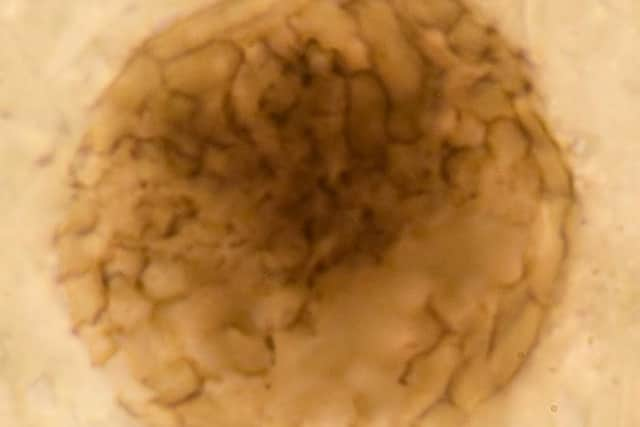Loch Torridon: Billion-year-old fossil, which could prove a new link in the evolution of animals, found in the Highlands
A billion-year-old fossil which could prove a new link in the evolution of animals has been found in the Highlands.
Scientists led by the University of Sheffield and the US's Boston College found the microfossil at Loch Torridon in north-west Scotland.
Advertisement
Hide AdAdvertisement
Hide AdThe fossil - described and formally named Bicellum Brasieri in a research paper published in Current Biology - contains two distinct cell types and could be the earliest multicellular animal ever recorded.


Professor Charles Wellman is one of the lead investigators of the research from the University of Sheffield's Department of Animal and Plant Sciences.
He said: "The origins of complex multicellularity and the origin of animals are considered two of the most important events in the history of life on Earth, our discovery sheds new light on both of these.
"We have found a primitive spherical organism made up of an arrangement of two distinct cell types, the first step towards a complex multicellular structure, something which has never been described before in the fossil record.
"The discovery of this new fossil suggests to us that the evolution of multicellular animals had occurred at least one billion years ago and that early events prior to the evolution of animals may have occurred in freshwater like lakes rather than the ocean."
The fossil reveals new insight into the transition of single-celled organisms to complex multicellular animals.
Its "exceptional preservation" allowed the scientists to analyse it at a cellular and subcellular level.
The team now hopes to examine the deposits from Torridonian for more interesting fossils which could provide further insight into the evolution of multicellular organisms.
Advertisement
Hide AdAdvertisement
Hide AdProfessor Paul Strother, lead investigator of the research from Boston College, said: "Biologists have speculated that the origin of animals included the incorporation and repurposing of prior genes that had evolved earlier in unicellular organisms.
"What we see in Bicellum is an example of such a genetic system, involving cell-cell adhesion and cell differentiation that may have been incorporated into the animal genome half a billion years later."
A message from the Editor:Thank you for reading this article. We're more reliant on your support than ever as the shift in consumer habits brought about by Coronavirus impacts our advertisers.
If you haven't already, please consider supporting our trusted, fact-checked journalism by taking out a digital subscription.
Comments
Want to join the conversation? Please or to comment on this article.
